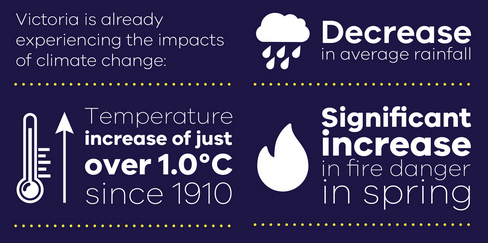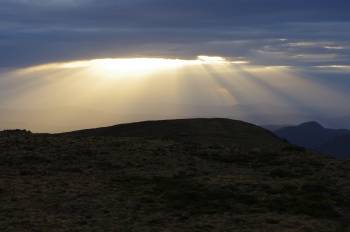The Victorian government has recently released the ‘Climate Science Report 2019’, which brings together the latest climate change science knowledge gained from the government’s ongoing investigations into climate science. The report provides further useful insights into both how our climate is changing and what it means for Victoria’s future.
In many ways, there is nothing new in the report. It notes that Victoria’s climate has ‘changed in recent decades, becoming warmer and drier’. These changes are expected to continue in the future.
In general terms, the state’s environment is becoming hotter and drier, with
- an overall increase in the frequency of unusually hot days
- a decline in cool season rainfall over the last 30 years
- greater number of very high fire danger days in spring
There are some details relevant to mountain environments, which we will outline briefly below (as direct quotes).
Snowpack
‘A decline in snow accumulation and the extent of snow cover has been observed since the 1950s across the Victorian Alps, with the largest declines during spring. These changes are closely linked to increasing daily maximum temperatures in winter, which is projected to continue to increase in the future’. (p21)
Climate change and snow tourism
‘Changes to Victoria’s alpine environment under climate change will impact the region’s environmental, economic, social and cultural fabric. Animals already under threat include the Mountain Pygmy Possum, Baw Baw Frogs and the Powerful Owl.

As natural snow declines, more snow would need to be made to cater for the current level of snow activities, with the added challenge of warmer conditions. Visitor numbers may decline, affecting the economic viability of resorts. In 2016, the Alpine Resorts Co-ordinating Council commissioned the Antarctic Climate and Ecosystems Cooperative Research Centre to identify the potential impacts of climate change on Victorian alpine resorts. The study projected snow cover and volume would decline by 70 to 86% by the 2090s (under high emissions) compared to recent decades (1961–2010). Under those conditions only the highest peaks will get any snow. The northern resorts (Mt Buller, Mt Stirling, Mt Hotham and Falls Creek) are projected to have adequate snow to support winter snow activities in the short to medium term (20 to 30 years) with snow-making. The southern resorts (Mt Baw Baw and Lake Mountain) should have adequate snow to support winter snow activities in the short term (10 to 20 years).
These climate data informed the social and economic Alpine Resort Futures Vulnerability Assessment Report, which will in turn underpin the Alpine Resorts Strategic Plan that is currently under development. Climate data have also been used by alpine resorts to plan year-round activities and maximise economic sustainability in the future’. (p39)
Fire season
‘There has been an increase in dangerous fire weather and the length of the fire season across southern Australia since the 1950s. Fire weather in Victoria is largely measured using the Forest Fire Danger Index (FFDI). This index estimates the fire danger on a given day based on observations of temperature, humidity, wind speed and fuel (based on factors including recent temperature and rainfall). Although considerable year-to-year variability also occurs, there is a trend in more recent decades towards a greater number of very high fire danger days in spring’. (p21)
Rainfall and stream flow
Obviously the Alps provide the headwaters for most of our major rivers. The report says:
‘Across the state, there have been significant reductions in streamflow. An analysis conducted in the Victorian Climate Initiative (VicCI) found that the declines varied between about 25% and 75% (1997–2014 compared to 1975–1997), with relative declines typically larger in western Victoria, and smaller in the alpine areas.
 ‘The cure for depression is action’.
‘The cure for depression is action’.
These words come from the founder of Patagonia, Yvon Chouinard. He’s right of course. Ideas for taking action available here.
























































Leave a comment